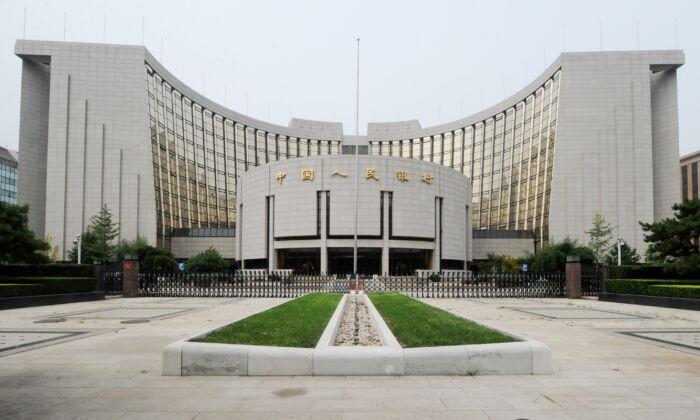News Analysis
A new
report argues that China is being forced to go all-in for a “Digital Yuan” after the percentage of trade cleared in its own currency has been cut in half since 2015.
China in 2012 initiated a strategy to turn its domestic yuan currency into a free-floating global reserve currency by 2015. The percentage of export transactions executed in yuan did more than doubled over the next three years from 12.5 percent to 27.3 percent; but the rate has plunged back to 12.5 percent, according to Enodo Economics.
The Cato Institute famously issued a research report in 2008, on the verge of the global financial crisis, called “Debt Threat,”
warning that: “China could use its large holdings of U.S. government debt to gain political leverage by threatening to dump those securities if the U.S. threatens to enact protectionist measures or to intervene in relations between the mainland and Taiwan.” The Cato Institute argued that China would use its “increasing economic power to edge out the United States as the dominant power in Asia.”
The future looked so bright that Vanity Fair Magazine proclaimed “
The Chinese Century“ because 2014 would be the last year the United States could claim to be the world’s largest economic power. The article argued that, “China enters 2015 in the top position, where it will likely remain for a very long time, if not forever.”
But Endo Economics
highlighted in an April 2017 report, titled “The Return of China Risk,” that with China’s debt to GDP ratio approaching uncharted territory, state-owned firms’ ability to service their debt having deteriorated dramatically, and authorities no longer able to sweep bad loans under the carpet, “instability would come back with a vengeance in 2017-18 as Beijing is forced to deal with past excesses.”
Endo Economics also warned that China interbank borrowing by non-bank financial institutions had risen 12 times in the past three years, faster than the U.S. increase on the run-up to the financial crisis; and non-government debt rose faster in the last decade than in the 1980s run-up to Japan’s debt crash.
Despite Beijing’s continuing efforts to stimulate the economy through massive infrastructure spending, China’s growth rate has slumped over the last three to its
slowest rate in 30 years. As a result, total corporate, household and government debt now exceed
303 percent of GDP and makes up about one seventh of all world debt.
Although the authorities set financial deleveraging as a goal in 2019, China suffered its first
bank defaults in three decades and a record 178 domestic corporations defaulted on their bond debt. Fearing higher risks of a debt and yuan currency crash, China’s international customers and suppliers are demanding payments in U.S. dollars.
Having failed to widen global payments in yuan, Endo Economics
suggests China is going all-in to initiate a sovereign digital yuan. The Peoples’ Bank of China (PBOC) on Jan. 1 launched a series of new rules governing online encryption that will pave the way for a digital version of the yuan. The PBOC will unveil a regional pilot test later this year.
The PBOC believes it can maintain control over the nation’s money supply by operating the digital yuan as a centralized system that utilizes blockchain or another new technology that evolves from the nation’s penchant for electronic payments.
The Epoch Times
reported that China drove a global high of 60.5 billion mobile payment transactions in 2018. The total value of annual mobile payments rose by 58.6 percent to
$65.9 trillion (467.8 trillion yuan) the same year. Led by China, the global mobile payment market is forecast to triple to as much as $253 trillion (1,800 trillion yuan) by 2025.
Online shopping is so perfected in China that about 40 percent of Chinese digital payment users now carry less than
$15 (100 yuan) in cash, according to a Tencent study. About 65 percent of Chinese tourists have made mobile payments abroad, almost six times more than the average non-Chinese traveler.
President of the Chinese Finance Association and former PBOC Governor Zhou Xiaochuan
told the 2019 Caixin Hengqin Forum in November that the virtual yuan’s initial focus would first be domestic, but the digital yuan will eventually be globally integrated into China’s “One Belt, One Road” (also known as Belt and Road) sphere of economic and political influence.






Friends Read Free